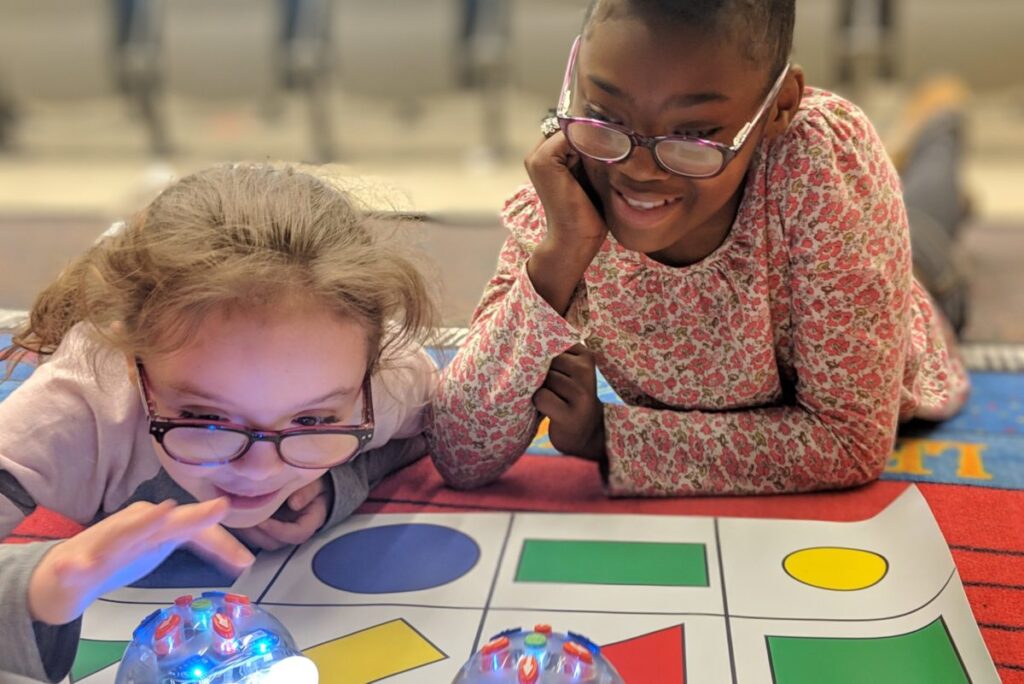For many parents and teachers, tackling topics like engineering and science with children can seem daunting. Questions like, “Why is the sky blue?” can leave adults feeling like they don’t have the answers. However, many experts believe that this kind of “science talk” is just what children need in their early years, before the fear of being wrong materializes in formal and more competitive learning environments.
“In 20 years as a STEM educator, I have rarely gone a day without hearing or reading two common refrains about elementary education. If these themes were reduced to bumper sticker slogans they would read as follows: Elementary teachers fear science. Children are born scientists,” explained Doug Haller, principal of Haller STEM Education Consulting. Haller, a former educator, has made STEM education his business, literally, and now runs the blog STEM Education: Inspire, Engage, Educate.
Early learning experts have begun to tackle this conundrum. Sesame Street, long known for its pioneering efforts to teach basic math and literacy skills to young children has, in the last four years adjusted the show’s seasonal curricula to include specific science and engineering concepts and to emphasize more specific investigative skills.
For example, the character Grover, who was traditionally known for confidently making mistakes, is now “Super Grover 2.0.” This new version of the Muppet uses trial and error to solve seemingly silly problems like, say, a cow that is stuck in a doorway because of an inhibiting hairdo. Grover’s solutions are now directly linked to science concepts like spatial reasoning. Sesame Workshop will soon be unveiling a new online hub on its website, with new videos, online and mobile games, and parent and teacher resources on teaching science.
The best part about Sesame Street’s new curriculum is that it’s working. While there currently is no publicly available standardized assessment tool to gauge preschoolers’ science knowledge, recent studies conducted by Sesame Workshop, the nonprofit that produces of the show, have found that children can learn sophisticated vocabulary and valuable science concepts from shows like Sesame Street.
Aside from appealing to children’s inherent desire to ask questions about their environment, there are other reasons experts support using STEM concepts in pre-K classrooms.
“One often overlooked benefit of early childhood STEM programs is that they can counteract the destructive and persistent belief that math is for boys,” said Linda Rosen, CEO of Change the Equation, a nonprofit dedicated to improving STEM learning in a recent report. “Boys and girls alike internalize this belief as early as second grade, long before any actual gender differences in performance. We need to nip those attitudes in the bud, especially since math is the language of STEM.”
In addition to being the language of STEM, seminal research by Greg Duncan, professor at UC Irvine, has shown that pre-kindergarten mathematical knowledge is actually the highest predictor of later academic success. And early childhood exposure to STEM concepts not only helps to diffuse gender norms, like Change the Equation’s Rosen said, but can also help fight other harmful notions that often prevent children from pursuing their science-based interests.
For example, Lisa Guernsey, author of “Screen Time: How Electronic Media—From Baby Videos to Educational Software—Affects Your Young Child,” explored the benefits of teaching young children computer programming skills, like coding, in a recent op-ed for the New York Times.
Guernsey spoke to Claire Caine, a technology instructor at the Jewish Community Day School in Boston, where students have been testing out Scratch Jr., a new programming language designed for kindergarten students. “The earlier you catch them, the better off they are,” Caine told Guernsey. “The idea that they might not be good at something hasn’t entered their mind yet.”
Guernsey also noted that children are less likely to be swayed by stereotypes before age eight or nine. She has explored effective, hands-on ways to teach early engineering concepts in preschool and elementary-level classrooms. In a recent piece for the Smithsonian’s online magazine, she explained the game “Ramps and Pathways,” which has children construct ramps for marbles using common objects like blocks and strips of wooden molding. “In Ramps and Pathways classrooms, children explore the properties and possibilities inherent in a few simple materials,” said Guernsey.
Guernsey also interviewed Beth Van Meeteren, professor at the University of Northern Iowa, about the game. Van Meeteren wrote her dissertation on the subject, and has recorded videos of students’ decision-making skills as they build and rebuild their designs. She once saw a first-grade student build a structure over several days, culminating in 13 three-foot ramps in a “labyrinth-like” design that spiraled to the ground. “The marble traveled 39 feet on a structure that took up only nine square feet of floor space,” Guernsey wrote.
Van Meeteren explained that the design was entirely the student’s idea, and that games like “Ramps and Pathways” can teach a multitude of skills in the classroom—not just math. “I’d love to get this into more classrooms,” she said. “It seems that only gifted classrooms are allowed this quality instruction. All children benefit.”
Ideally, STEM learning will continue to find more outlets in early childhood classrooms, as well as kids’ media. But, until then, it’s up to teachers and parents to tackle STEM topics head on and meet young learners where they are, before it’s too late.
